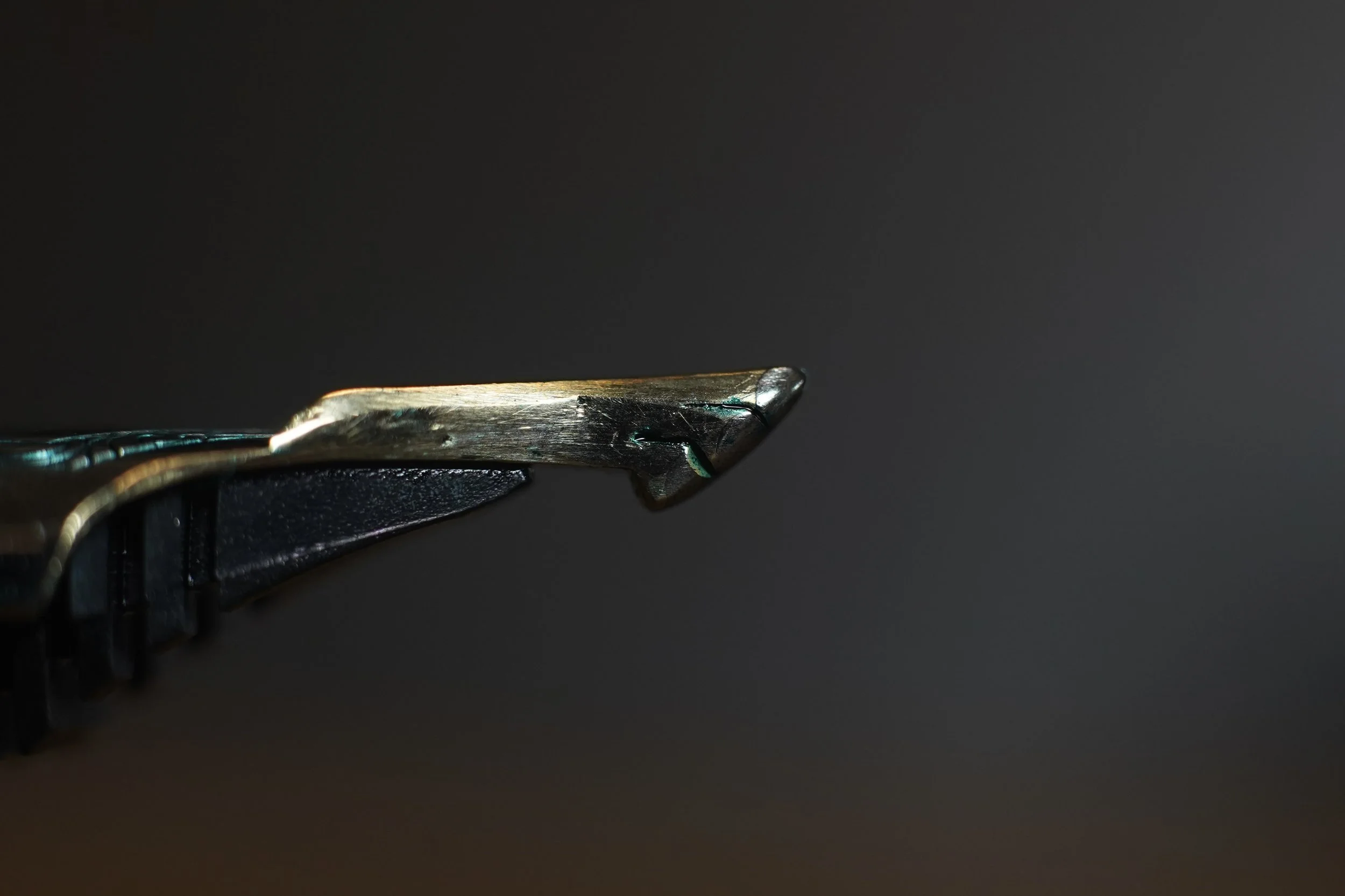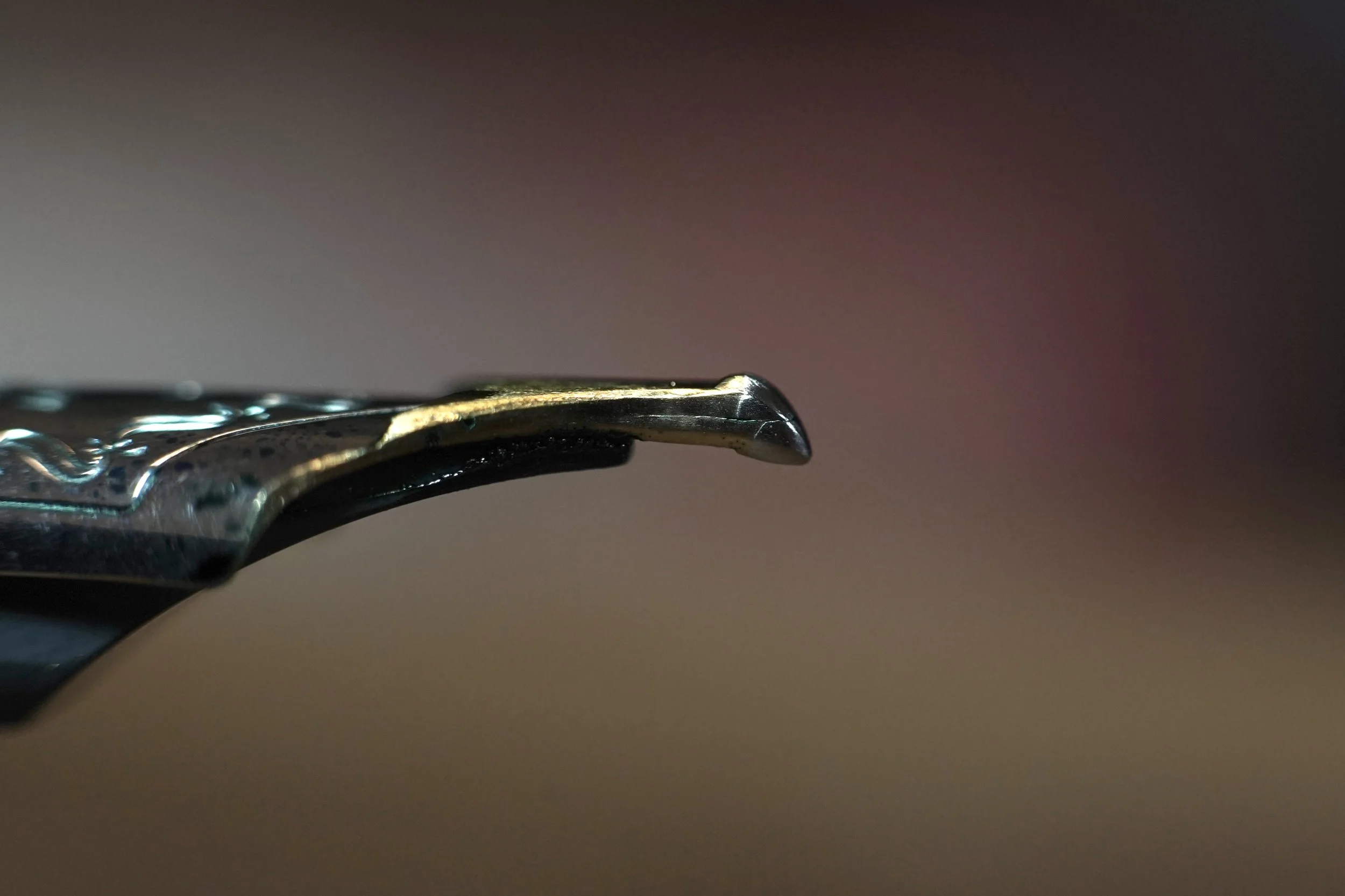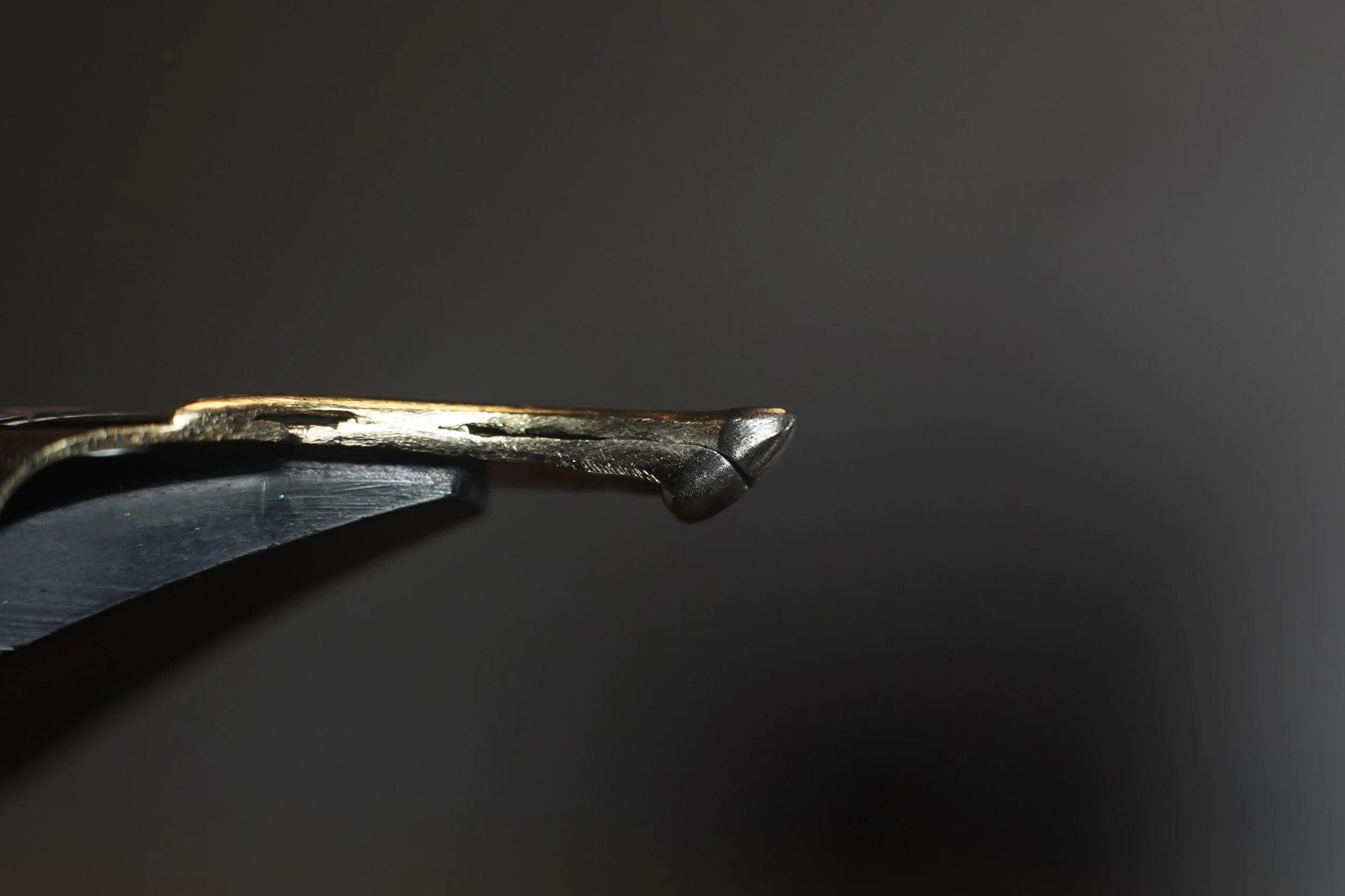Stacked Nibs (多層刀)
Fans of Japanese fountain pens will undoubtedly have heard if the legendary Cross nibs from Sailor. In their current incarnation, Sailor offers the Cross Point, a slim but long 2 layer NAG-like grind, the Cross Music, a 2 layer Architect-like grind, and the Cross Concord, a reverse NAG-like grind. In the past, 3 layer grinds such as the King Eagle and the underside welded King Cobra have also been produced. As the story goes, Nagahara Nobuyoshi (Senior), Sailor’s nib designer who played a large part in popularising the NAG, was on a business trip in Tokyo in 1996. According to Moriyama of Fullhalter, Nagahara wanted to make a drawing nib for an artist when the idea came to him on one of those Tokyo nights. Seized with inspiration, Nagahara worked through the night until, in the morning, he had completed his first Cross nib. That day, Nagahara called Moriyama from a department store in Nihonbashi, saying “I made something amazing and I want to show it to you so come over now!”
Moriyama, a legendary nib worker and his own right, writes on his blog that his encounter with the Cross nib had a lasting impact on his relationship with fountain pens. It had opened up the world of fountain pens even further for him, and he calls the Cross nib the ultimate expression in broad nibs. Indeed, Moriyama dedicates a large portion of his website to singing the praises of the Cross nibs. In one article, he writes about the 3 generations of stacking techniques, which he calls old, zure (shift), and new. It certainly is interesting to see how the “hook” style of stacking nibs was developed. In recent years, some nib workers across the world have popped up and started welding nibs in the both the style of the Cross nibs, as well as new innovative styles.
Of course, one cannot talk about contemporary stacked nibs without talking of Ralph of Regalia Writing Labs. I want to separate Ralph from the rest of the above due to the sheer genius of Ralph’s creations. Ralph was, as with many of us, inspired by Nagahara Senior’s insane creations. Out of a longing for more interesting nibs, Ralph decided to make his own, and from his mind was born wonders like those found on his website. Indeed, Ralph was a very important inspiration for Kyuseido. Ralph inspired CY to start working on nibs professionally and continues to light a fire inside us here at Kyuseido.
When approaching stacked nibs at Kyuseido, we look to create the most clean and well writing nibs as we can. As Moriyama’s website makes clear, there are 3 different ways to layer. Most welders that I have listed above are layering the nibs using the “old” method. This means that they grind the tipping of each nib flat in order to have a clean stack. However, we want to incorporate two elements into our nibs. The first is the “new” layering method, where the top layer actually hooks onto the bottom, or vice versa. This gives the nib a really brilliant and juicy tip, and we think it just looks more aesthetically pleasing. It also benefits from preserving the most tipping of the three methods. The second is the way we cut our tines. We like to cut the tines in a reverse V shape, which means that, when unwelded, there are two tiny pieces of tipped gold floating around the workspace. This means that the welding is much more difficult, because we need to make sure that the top tines are perfectly aligned to the bottom tines. We also need to ensure that the top tines are aligned with each other, because it is very easy to make a weld that results in a tine gap between only the top tines. However, we do this as part of our distinct visual identity and is a testament to the skill of our craftspeople.
-
2 Layer Forward Stack
A 2 layer version of the Tousen, distinctive for the + shaped slit to deliver more ink to the writing surface
-

3 Layer Forward Stack
A 3 layer version of the Tousen, which can create an even broader point and deliver more ink than the 2 layer version
-

2 Layer Reverse Stack
A 2 layer version of a reverse Tousen, with the regular writing position yielding a fine width, while the reverse being a Tousen grind



